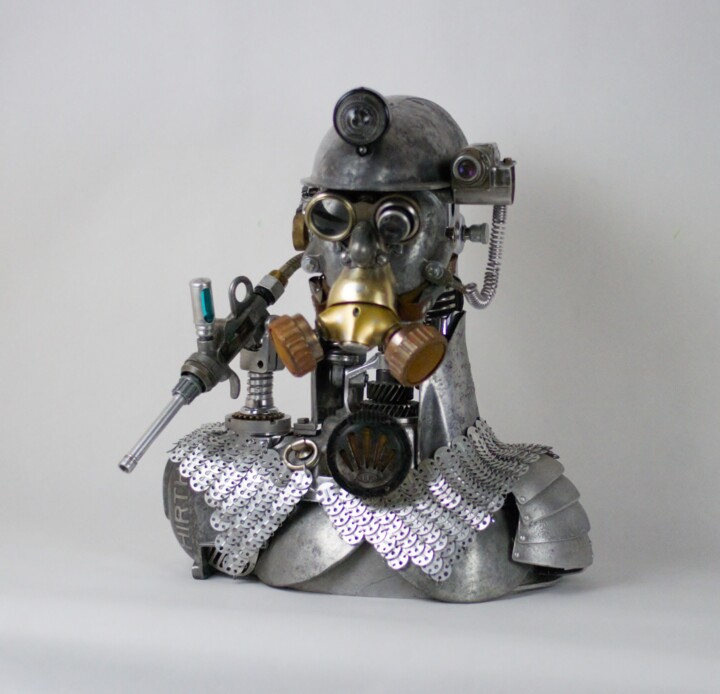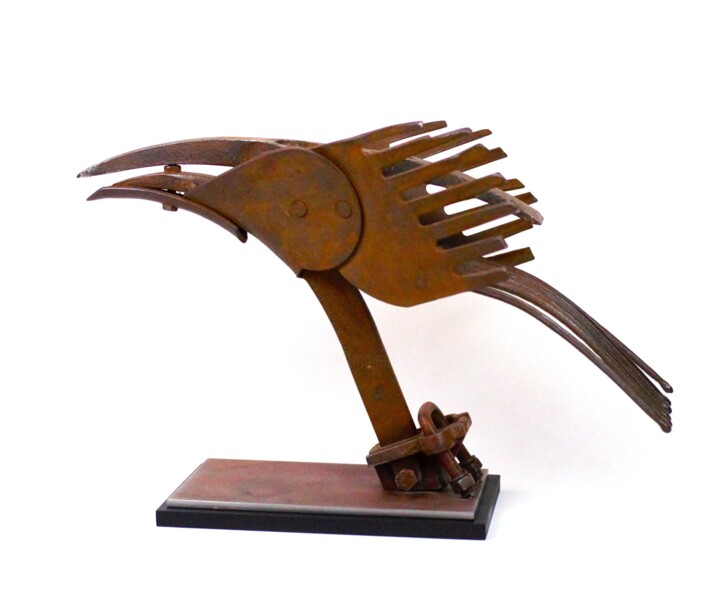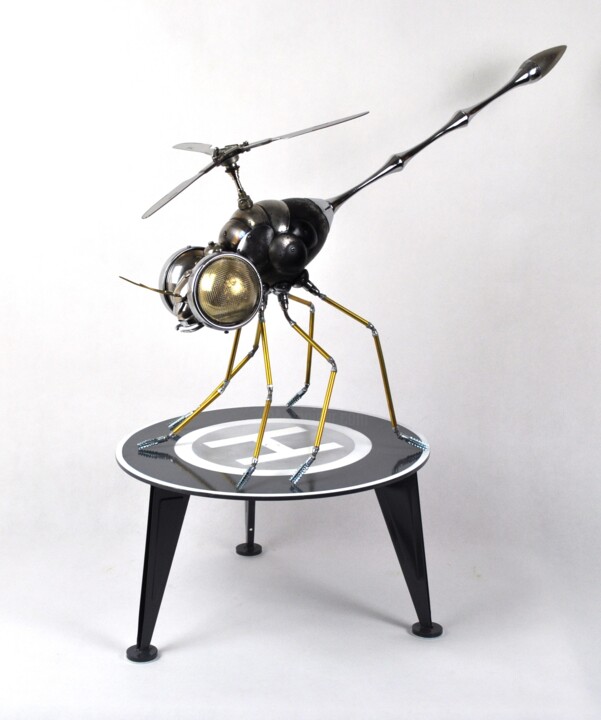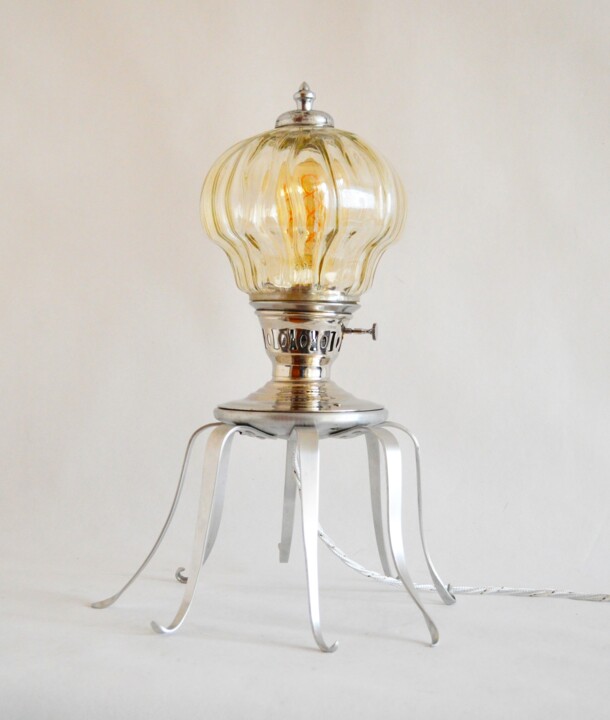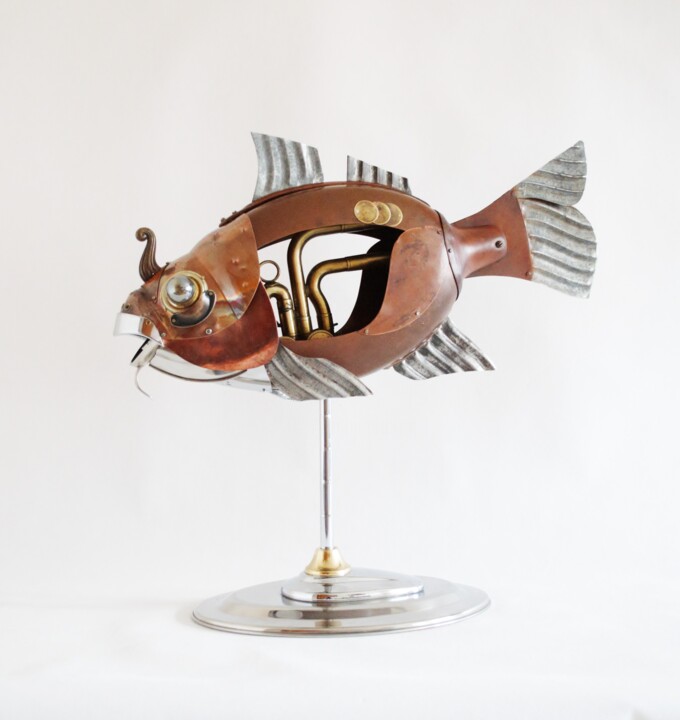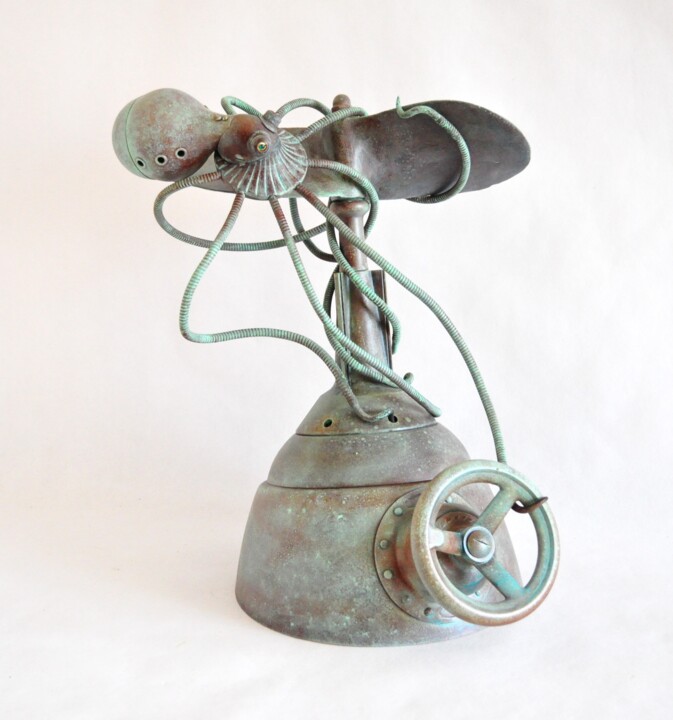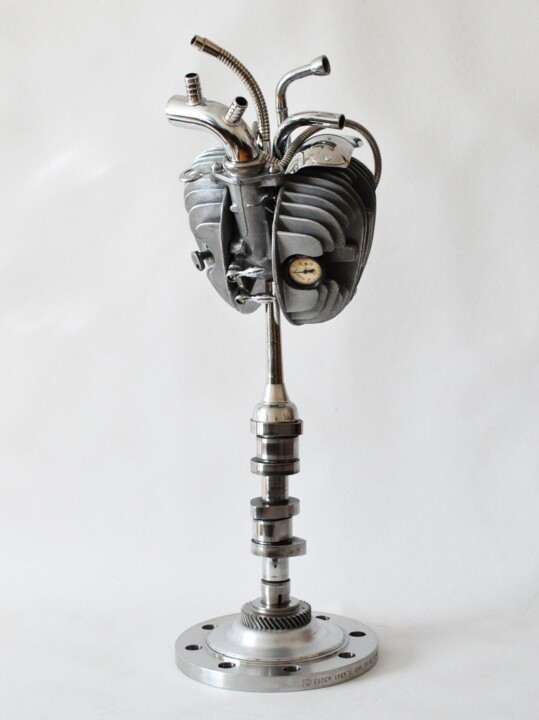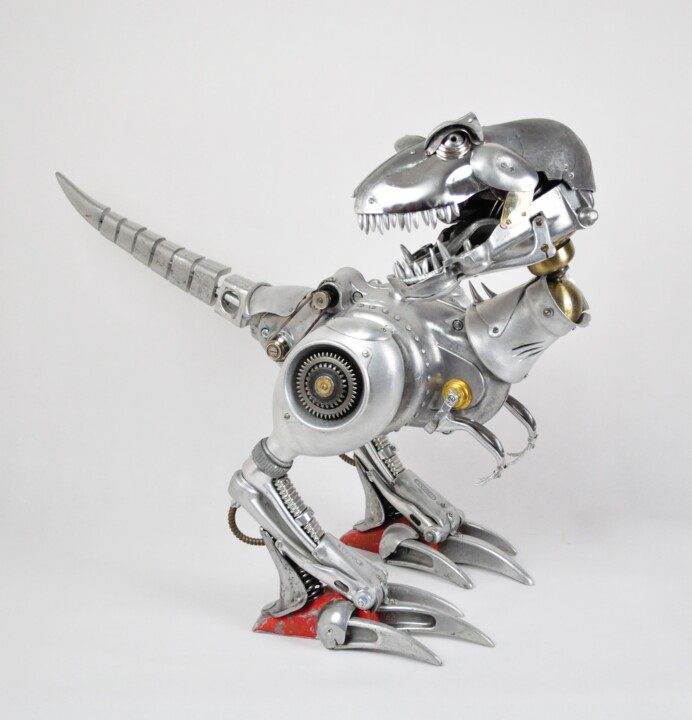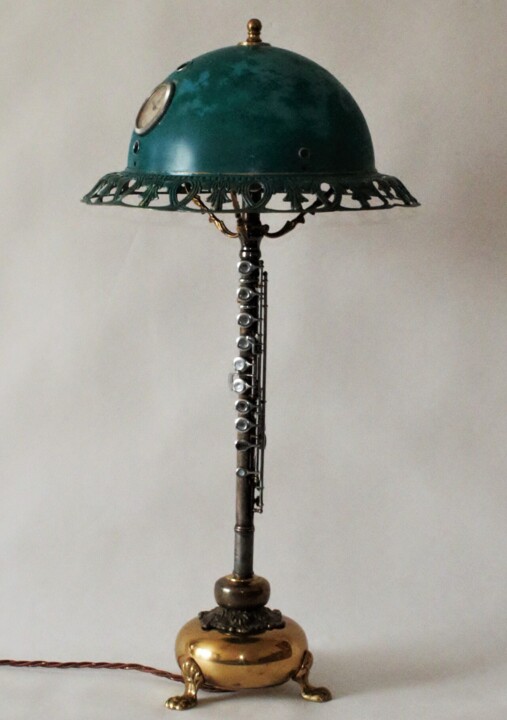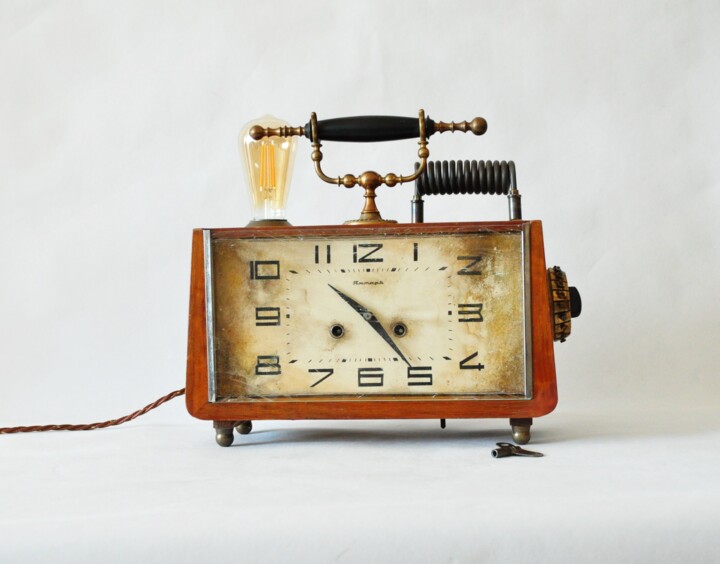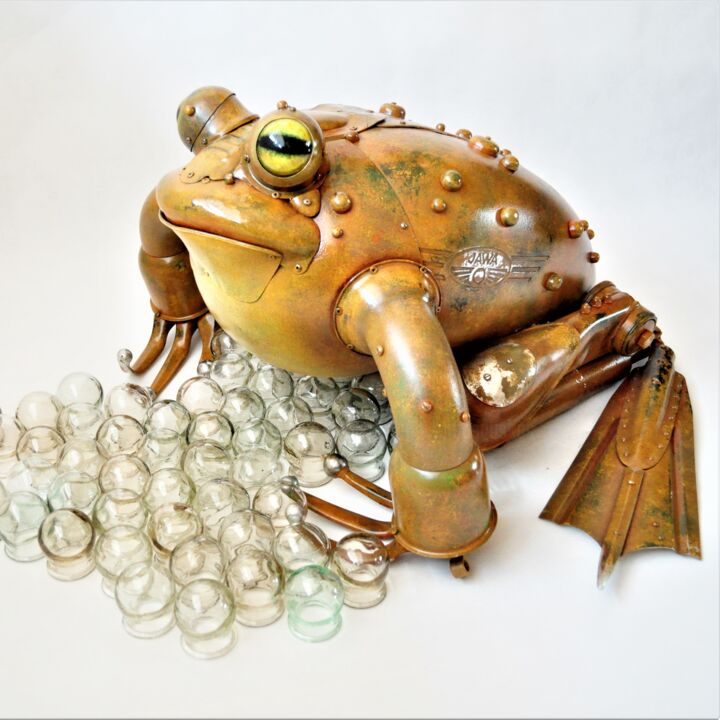What made you approach art and become an artist? (events, feelings, experiences...)
I think it was programmed in the subconscious. I grew up in a family that loved music and art. I was a musician myself for many years, playing various musical instruments, but over time I realised that I was drawn to other things. Life has taught me a lot, and I had to try non-art jobs before I came to the right path, and I think the right path. This art direction has helped me to understand what I want, what I'm striving for. For more than ten years now I have been working in this field, which allows me to express myself as an artist in the best possible way and to achieve my goals.
What is your artistic journey, techniques and subjects you have experimented with to date?
After studying at the Academy of Fine Arts, I had the opportunity to work as a metal engraver, which is when I was exposed to the subtleties of metal and the understanding of its potential applications. In my spare time I used to paint, trying to find my own style. Unfortunately painting didn't take off, or in other words, didn't take me, so I pushed it aside indefinitely. The culprit is Steampunk, which I met on the almighty internet. It's a style of weirdness and uncertainty that allows for experimentation and endless variation through imagination and out-of-the-box solutions. I like it and it fits my character.
What are 3 aspects that differentiate you from other artists, making your work unique?
I have always been in favour of creative freedom. After all, there is nothing better than being able to create what you like. The most important thing is that you do it with love. I use objects or fragments of metal that I don't need, which can be found in scrap metal yards or antique markets. Thanks to my imagination and a different vision, they take on a new form, as if they are reincarnated, transformed and become something else in artistic expression. I feel a kind of relief when I resurrect an object whose history is doomed to destruction. I always try to make sure that the character I create carries a positive emotional charge and is visually appealing.
Where does your inspiration come from?
Inspiration comes from creation. I love what I do. The subject for my work comes to me when I am holding an object that interests me and I see a fragment of a future sculpture in it. I am most intrigued by the animal world. It is so fantastic and unique in its shapes and shades, so when I look for subjects for my work, I choose those animals whose body shapes seem to me to be the most suitable for non-standard solutions, which I do not shy away from in my art. I don't try to replicate the exact shape of the animal's body, but rather to add a unique and unexpected touch, often by thickening the colours and necessarily through a dose of humour.
What is the intent of your art? What visions, sensations or feelings do you want to evoke in the viewer?
I try to show that a discarded object can take on a different form and become a sculpture or an art installation that gives a completely different feeling, an emotion, which we need right now. I try to carry a positive emotional charge with a touch of humour, and I succeed. The most pleasing thing is when I see the smile on people's faces when they look at one sculpture or another. That's what drives me to create and to keep going.
What is the process of creation of your works? Spontaneous or with a long preparatory process (technique, inspiration from art classics or other)?
My work is directly dependent on the things I find in the scrap yards, as this determines the end result of the sculpture. I only have to look at a discarded fragment of an object and I model in my mind the future theme for a sculpture or assemblage. Sometimes I have to wait a long time before I find the right parts. Sometimes I create a sculpture spontaneously from fragments I already have in my arsenal and it surprises me.
What techniques do you prefer?If yes, can you explain it?
So far I have hardly used welding to complete my work, as most of the sculptures are joined together with different types of metal, so I use bolts and rivets of different diameters. This gives a kind of originality. The use of a bolt in the right place also adds to the aesthetic and precision of the work.
Are there any innovative aspects to your work? Can you tell us which ones?
I mentioned before that I have avoided welding, but I see that we cannot do without it, the sculptures are getting heavier, more complex and in some cases this method of reinforcement is necessary, so I am going to use it.
Do you have a format or medium that you are most comfortable with?If yes, Why?
I prefer small sculptures for interiors. I don't really have the capacity to do larger sculptures, although I wouldn't rule it out.
Where do you produce your work? At home, in a shared or private studio? And within this space how is your production organized?
I work in a small-scale workshop at home. I have all the necessary tools to work with metal. I take care of all the realisation of the works myself.
Does your work lead you to travel to meet new collectors, for shows or exhibitions? If so, what do you gain from it?
I am a member of the Union of Artists, I participate in joint and solo exhibitions in my country and on the Internet, which allows me to show and promote my work to a wider circle of people, and thus to become better known as an artist in this style.
How do you imagine the evolution of your work and your figure as an artist in the future?
I have to admit that this style has drawn me in and has not let go, and I see myself in the future creating in the medium that I find most acceptable. They say do what you do best. I am sure that art and creativity will continue to follow me.
What is the topic, style, or technique of your latest artistic production?
The style and technique of my latest work, which I have just finished, have remained the same. I have the principle not to be distracted, but to concentrate on one direction and to strive for the best result that can be achieved.
Can you tell us about your most important exhibition experience?
I think and hope that my most important exhibition is still in the future, so I can't share my feelings and achievements at the moment. The exhibition before this one gave me a lot of good emotions and experiences. Several pieces found new homes and delighted the fans.
If you could have created a famous work in the history of art, which one would you choose? And why would you choose it?
Pablo Picasso "The She Goat". I loved that it was a beautiful set of a wicker basket body, a palm leaf back, two ceramic flower pots for the batter and other metal elements, which were then cast.
I admire several artists whose work inspires me. They are Edouard Martinet, Stephane Halleux, Alain Bellino. Jessica Joslin





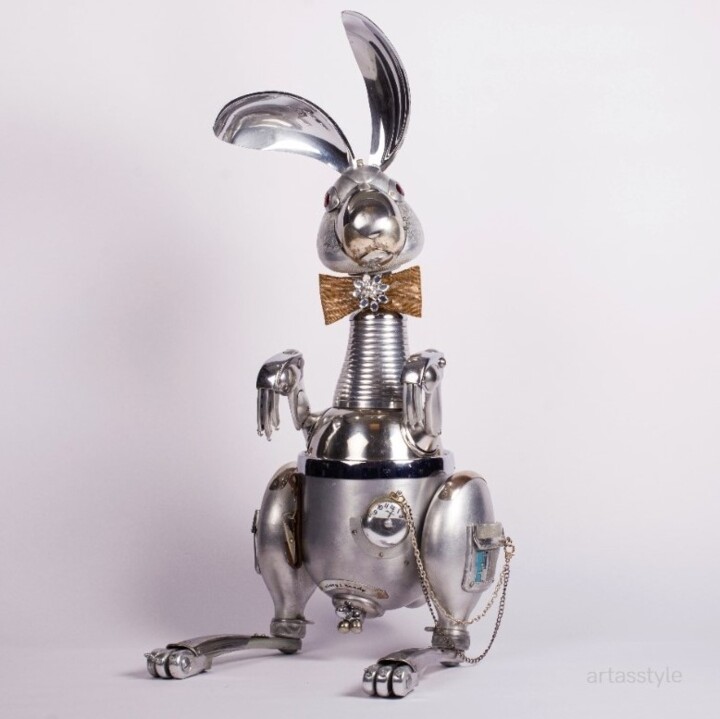

 Olimpia Gaia Martinelli
Olimpia Gaia Martinelli

